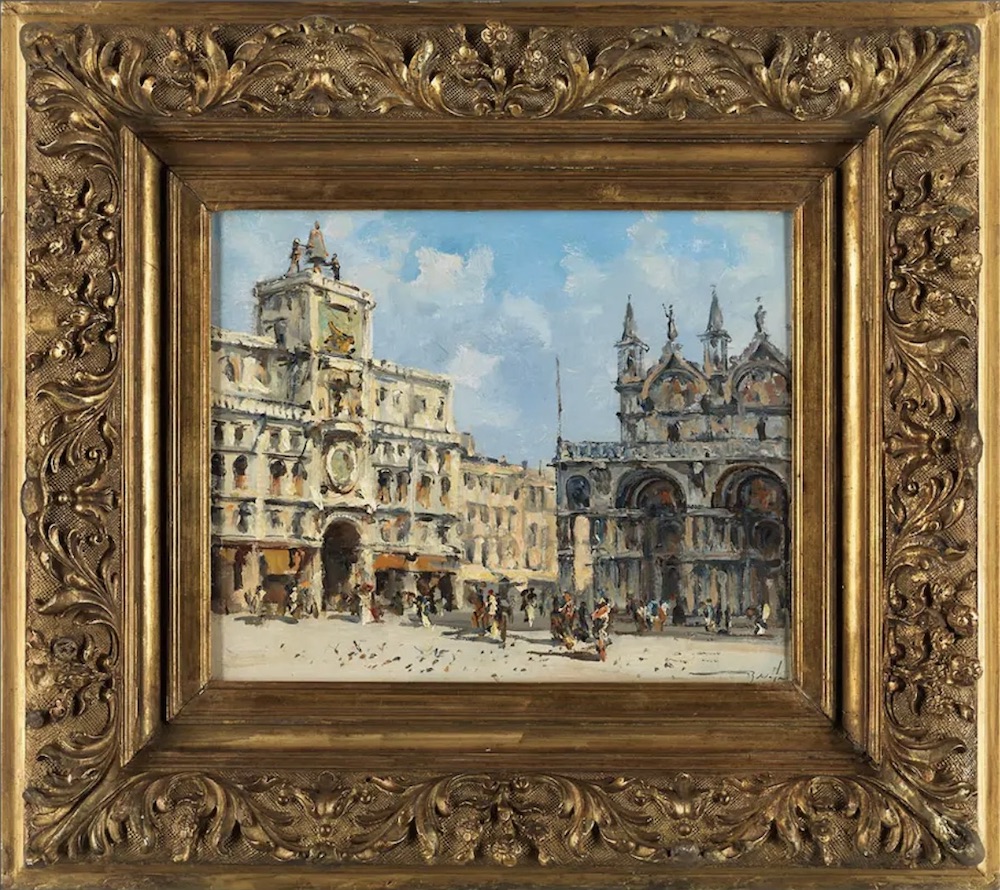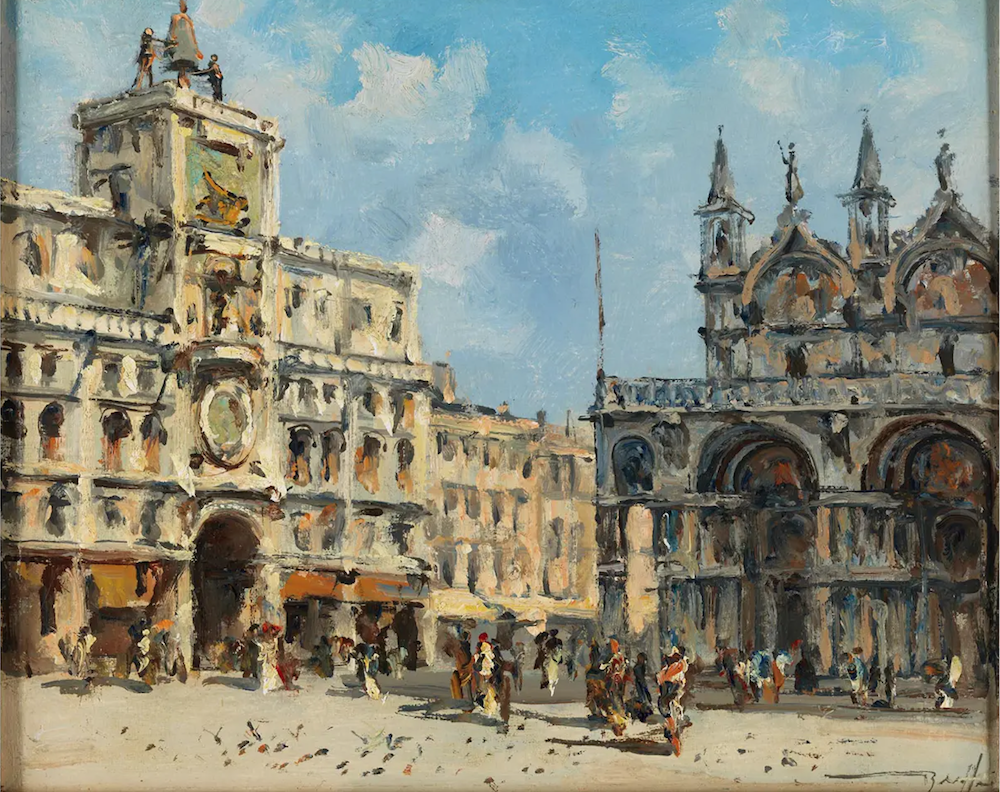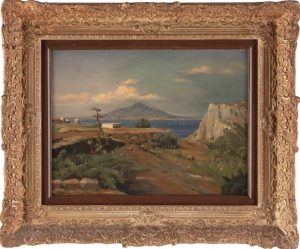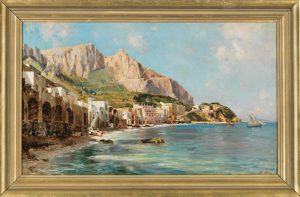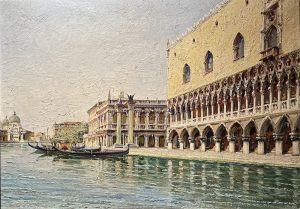Description
Roberto Iras Baldessari (1894 Innsbruck – 1965 Rome)
Scene at St. Mark’s Basillica in Venice
Material: Oil on panel
Dimension: 26 x 30 cm
Frame: Yes
About the Artist:
Roberto Iras Baldessari was a pupil of Luigi Comel at the Royal School Elizabethan of Rovereto, he finished his studies at the Academy of Fine Arts in Venice, where he came into contact with the artists of Ca’ Pesaro. Settled in Florence in 1915, he adhered to futurism and frequented the group of artists from the café Le Giubbe Rosse, also collaborating with the magazines L’Italia futurista and Roma futurista. In the early 1920s, he stayed in central Europe, where he experimented with Dadaist and abstractionist works. He then moved to Rome where he devoted himself mainly to engraving and landscape painting. In the 1930s, he made a new trip to Europe, participating in numerous international exhibitions. After a brief return to futurism which culminated with his participation in the 19th Venice Biennale and in the air painting exhibition of Filippo Tommaso Marinetti in 1934, he settled permanently in Rovereto where he produced engravings and frescoes. One of Baldessari’s leading scholars is the art historian Maurizio Scudiero, who compiled a catalog raisonné of the artist’s futuristic works and curated the RM Baldessari retrospective. Futurist Works at the Fonte d’Abisso gallery in Milan in 1997. In 2011, however, the Casa d’arte futurista Depero de Rovereto dedicated the Roberto Iras Baldessari exhibition to the artist. Deposits and acquisitions at the Mart.
